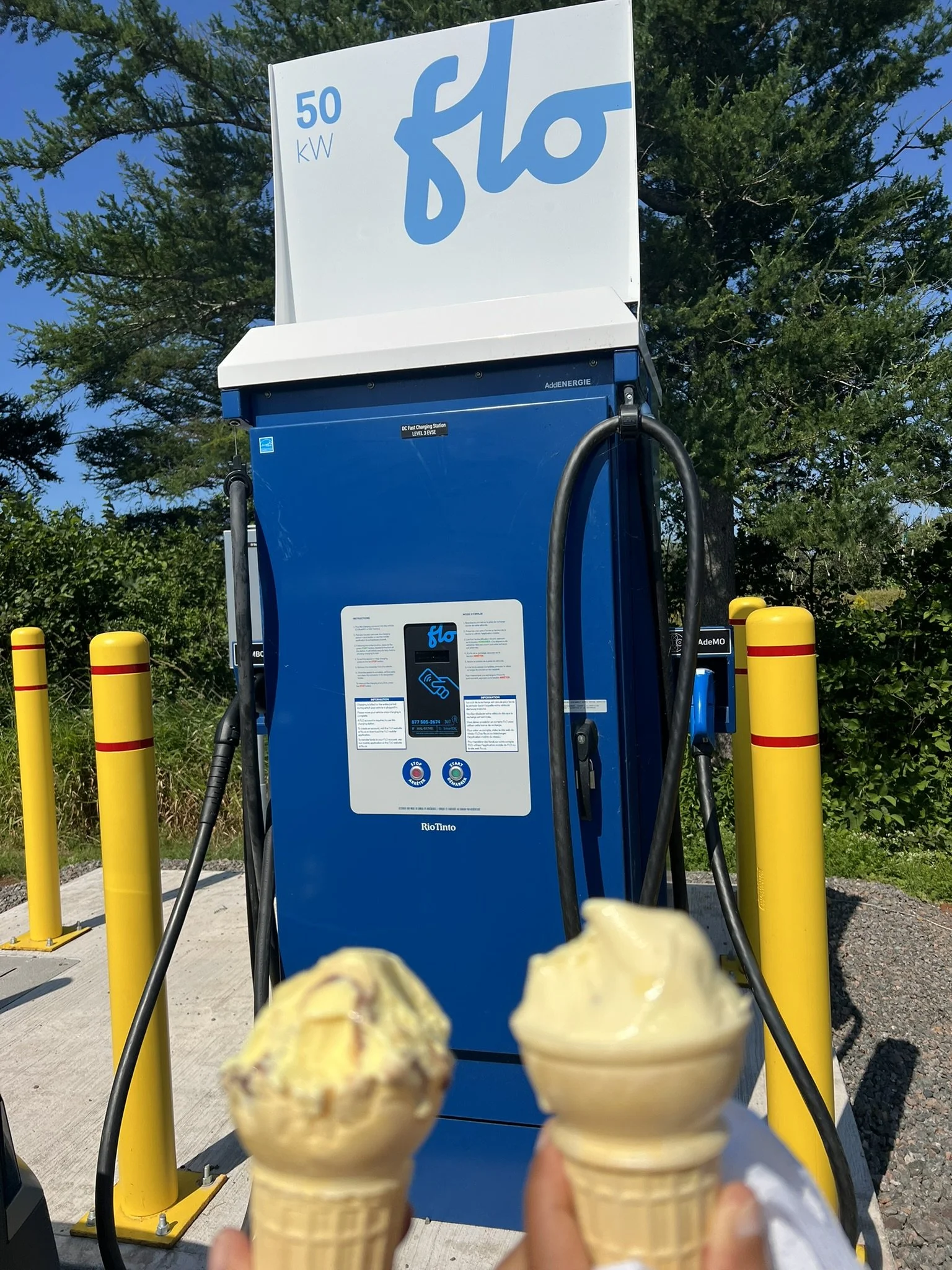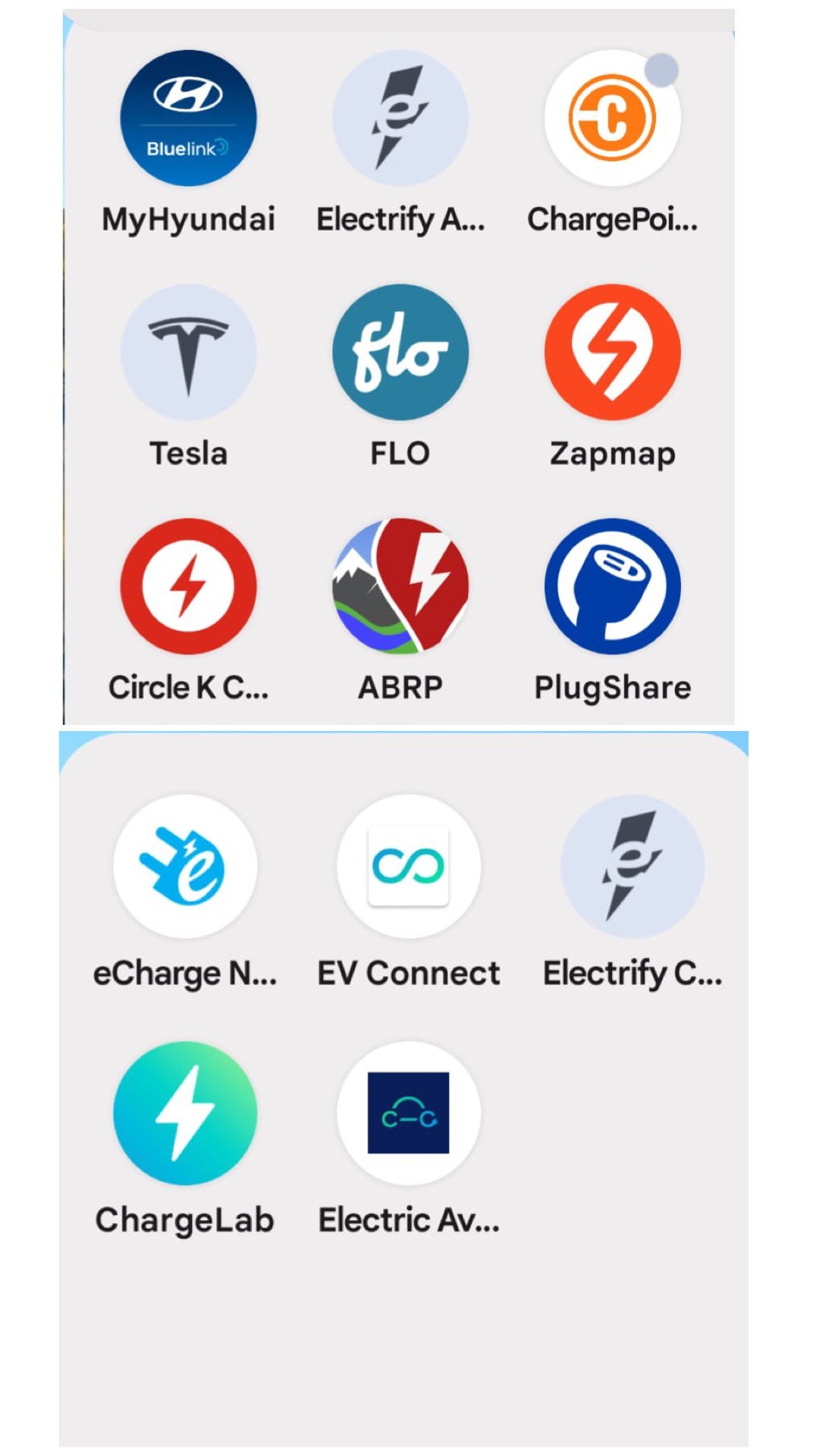Driving long distances in an electric vehicle
We have now driven 6000+ miles across a variety of EV charging landscapes on the east coasts of the US and Canada over the past 2 months and survived to tell the tale! These have included all the states/provinces that fall on the way from Florida to Newfoundland! Here are our learnings:
In summary, it takes some planning and more driving time than for a gas vehicle, but long distance travel in an EV in this part of the world is eminently feasible. And yes, it is occasionally anxiety-inducing - will a charger you are banking on to get you home be functional, will there be any waiting etc.?!
Driving time and frequency of charging
It on an average takes 30-40% more time with an EV than what Google Maps would suggest for a trip with no stops. So, a 4-hour trip would likely take 5-5.5 hours, a 6-hour trip closer to 8 hours.
We have on an average recharged every 150 miles – this works out well as that is typically how long we would like to go before stopping to stretch, get coffee and use restrooms.
We typically have recharged to 90% of capacity (240-260 miles of screen range) and drawn down to 30% (80-100 miles) by the time we get to the next recharge. This makes for relatively stress-free driving.
When we set off on our trip, we had a few teething scares as some charging stations that showed up on a map turned out to be chimeras, and some were out of order – chastened by this, we started building in this 30% buffer.
Interestingly, the real mileage is oftentimes lower than the screen mileage (due to factors such as excessive driving speed, aggressive acceleration, cold weather, tire pressure, and changes in terrain, or even adding a rooftop luggage carrier). With time, we have learnt to take this into account.
Logistics of charging
There are several companies that provide EV charging stations, both in the US and in Canada. While a competive marketplace in theory is great for the customer, very few have a national footprint and even those that do have several areas with patchy coverage. This has several implications:
We have ended up using 10 or more different providers over this period. These include Electrify America, Electrify Canada, ChargePoint, Flo, Tesla, Circle K, eCharge Network, EV Connect, ChargeLab, and Electric Avenue.
Using a plethora of providers shouldn’t be a big deal in and of itself - don’t we do this for everything from gas to groceries? However, in the case of EV charging, here is why it is somewhat of a pain to deal with all these providers:
We have needed to download 10 apps, one for each charging company, during this trip.
Each provider has their own idiosyncratic way of letting you charge - some let you simply swipe your card, some need you to use your app but require only for you to flash your phone in front of a reader (ChargePoint in Newfoundland) while others require you to press multiple buttons / swipes before they get going.
Pricing is vastly different - from the cheapest (15-20 US cents per kWh (ChargePoint/Newfoundland & Labrador Hydro) to nearly 3x greater at 50-60 cents per kWh (Electrify Canada and NovaScotia Power).
The reliability is variable - some are extremely reliable (again, kudos to ChargePoint / Newfoundland & Labrador Hydro - they did not let us down even once in the 20+ charges we did) whereas some have chronically poor maintenance resulting in only some of the charging stations working at any time.
Rated capacity of fast charging is again very variable (from 50kW to 350kW) (more on it below)
Fast chargers vary from 50kW to 350kW (Electrify America). The slower ones (50-150kW) typically dispense charge at or very close to the rated speed but the faster ones (250kW Teslas and 350kW Electrify Americas) operate well below rated speeds – the maximum we have seen the Electrify America ones operate is at 230kW – these are still faster than the slower rated ones though! Once the battery has charged up to 80-90%, the stations are programmed to drop charging speeds drastically, thus encouraging users to limit the amount of time they occupy charging stations.
We have managed to pull up to an empty charger more than 80% of the time, but have so far rarely needed to wait more than 15 minutes for our turn anywhere. We realize this may not be the case in busy cities but our travels have so far avoided these areas.
In addition to the service provider apps, it is advisable to download apps like ABRP, PlugShare and Zapmap that provide a map of all the EV charging locations and help you plan your route/travel. Google Maps also shows EV charging stations.
Economics
Although prices of EV charging vary from state to state and province to province and so does price of gas, it works out to be considerably cheaper than a gas vehicle (4-8 US cents per mile for EV at public chargers vs 10-15 cents per mile for gas). Charging at home though is considerably cheaper and blows the comparison out of the water!
Miscellany
We have struck up so many wonderful conversations with fellow EV brethren during charging stops – we definitely see it as a plus.
Most charging stations in the US are in the parking lots of stores such as Walmart and Target or in gas stations so one has access to restrooms and basic groceries/coffee. In Canada too, this holds for the most part but we have come across a few that did not have accompanying facilities.
But to make up for it, we have also found chargers situated next to a nature preserve or to a birdwatching hotspot, and almost always next to a patch of grass that allowed me to pursue my never-ending practice bouts to become half-decent at (golf) chipping!
We believe charging infrastructure is only getting better by the day and that supply will at least keep pace with the demand. If we had to choose again, we would pick up an EV without batting an eyelid. No way will we get back to the smelly, polluting gas burners!
The endless apps on my phone!

